Context
A few years ago , the top team at a Scandinavian industrial firm determined to put an ambitious growth strategy into practice. First, this firm would divest business units in Norway. Second, it would finalise the acquisition of a competing company twice its size and deploy a strategy to integrate the two. On the one hand, succeeding in this ambition would transform the firm into a market leader, while the high potential for failure risked uncertainty and upheaval.
Throughout 2020, significant changes to daily routines and priorities risked overwhelming the capacity of the firm’s new and existing personnel. While the company maintained its financial performance, difficulties in achieving cross-functional and operational objectives jeopardised the company’s overall health. Various strategic and operational challenges weighed much heavier than expected on the shoulders of managers and employees. They were endangering their commitment to the organisation’s transformation.
In December 2020, the firm’s new managing director contacted LQ for support and began what LQ calls an “iterative leader-led journey” to recharge the organisation’s batteries and re-energise the company to become more successful.
Battery profile at the start of the journey
Signs of fatigue, frustration and mistrust among people were perceptible and became apparent in the battery measurement at the end of 2020, just as the pandemic excluded the possibility of in-person communication between the organisation and its new staff. Nearly every organisational battery turned out to be empty. As we deduce from research data, this poses a severe risk to realising business results.
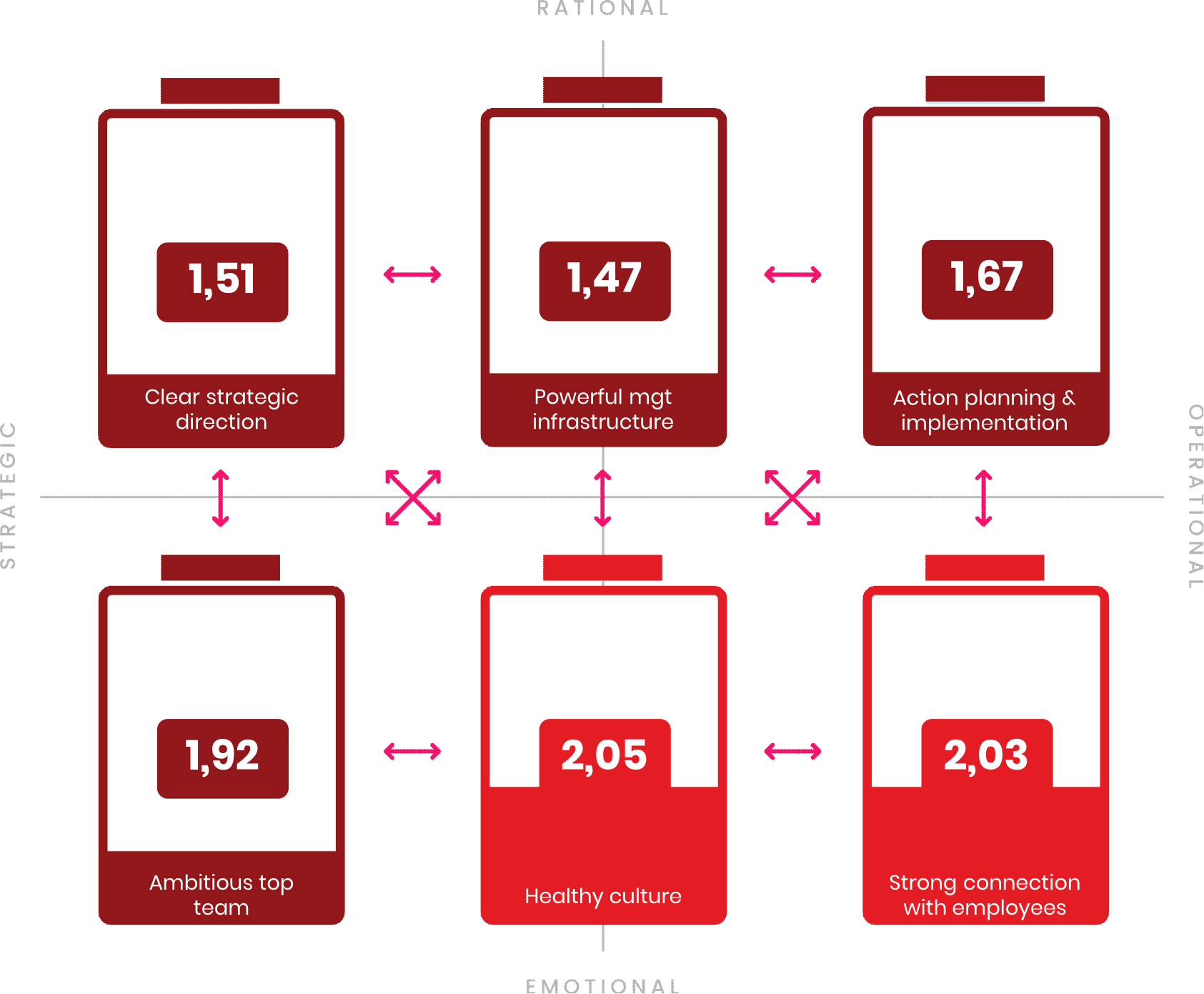
How did the top team transform a red picture into a greener one in just one year?
Challenge
This industrial company in Scandinavia is a relatively small Business Unit of a multinational. The business unit, with around 100 FTEs, has an EBIT of about €2 million.
Interviewing MT members confirmed the results of their Six Batteries Scan; their team faced severe internal challenges. For example, there was a disconnect between the departments, an inventory project did not progress for two years in a row, and critical customers complained about long lead times between order and delivery.
Their challenges were plotted on the Six Batteries of Change model: Lack of strategic planning and short-, medium- and long-term goal setting, trust issues between top team members, capability gaps in the infrastructure, unprofessional behaviour in the workplace, fragmented execution that was not cross-functionally aligned and disengaged employees.
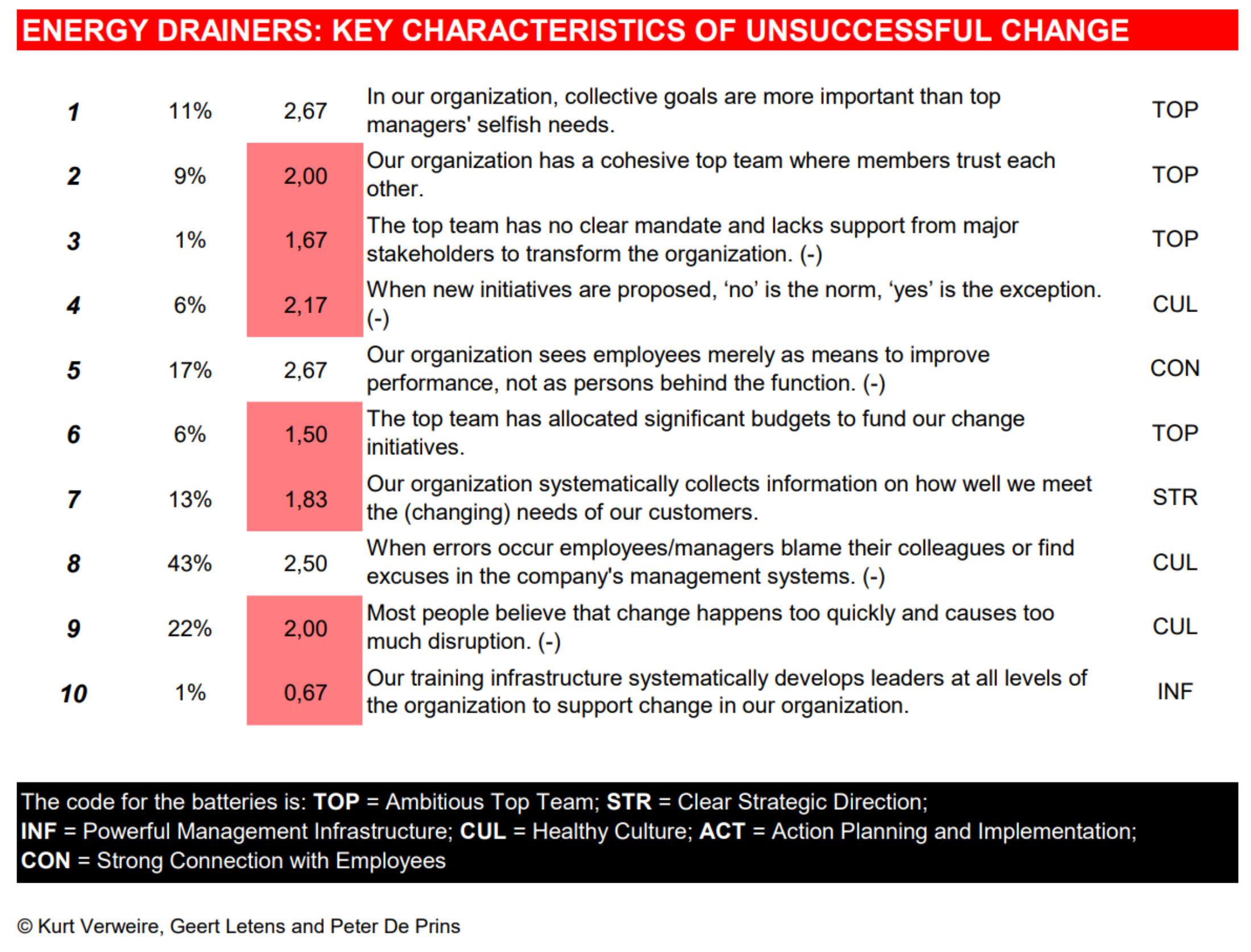
LQ first helped identify the critical energy drainers to begin prioritising various challenges. Research shows that tackling these makes the most significant difference in re-energising an organisation.
The data shows that four of their ten most costly energy drainers come from the Top Team battery. In addition, three drainers appeared to connect to the Culture battery, which again says something about the Top Team’s significant impact on Culture.
Six Batteries of Change explainedApproach
As you can guess, we proposed to work on the Top Team battery first, knowing that if this battery could be recharged to at least the basic level, it would neutralise the energy drainers and positively contribute to the work done in the other batteries.
Shortly after doing the Six Batteries Scan, the Managing Director decided to reduce the Management Team from ten members to six, with clear, robust responsibilities so that competing roles were eliminated within the team. Nevertheless, the team suffered from frequent transfers of people, with most needing more management experience. It could have been more apparent to them how they should work together as an MT and in their respective roles. There needed to be clear team rules and an effective meeting rhythm to connect the dots among the members.
Apart from that, decision-making was often unstructured and in silos. Silent resistance was visible during the long meetings. There were trust issues between individuals due to a few incidents that had occurred in the recent past. And if feedback was given at all, it was received defensively and perceived as non-constructive.
With this in mind, we agreed with the Managing Director to openly bring up the problems and make the team responsible for diving into the root cause analyses of these challenges and then solving them one by one. The following diagram shows the cause analyses generated by the team.
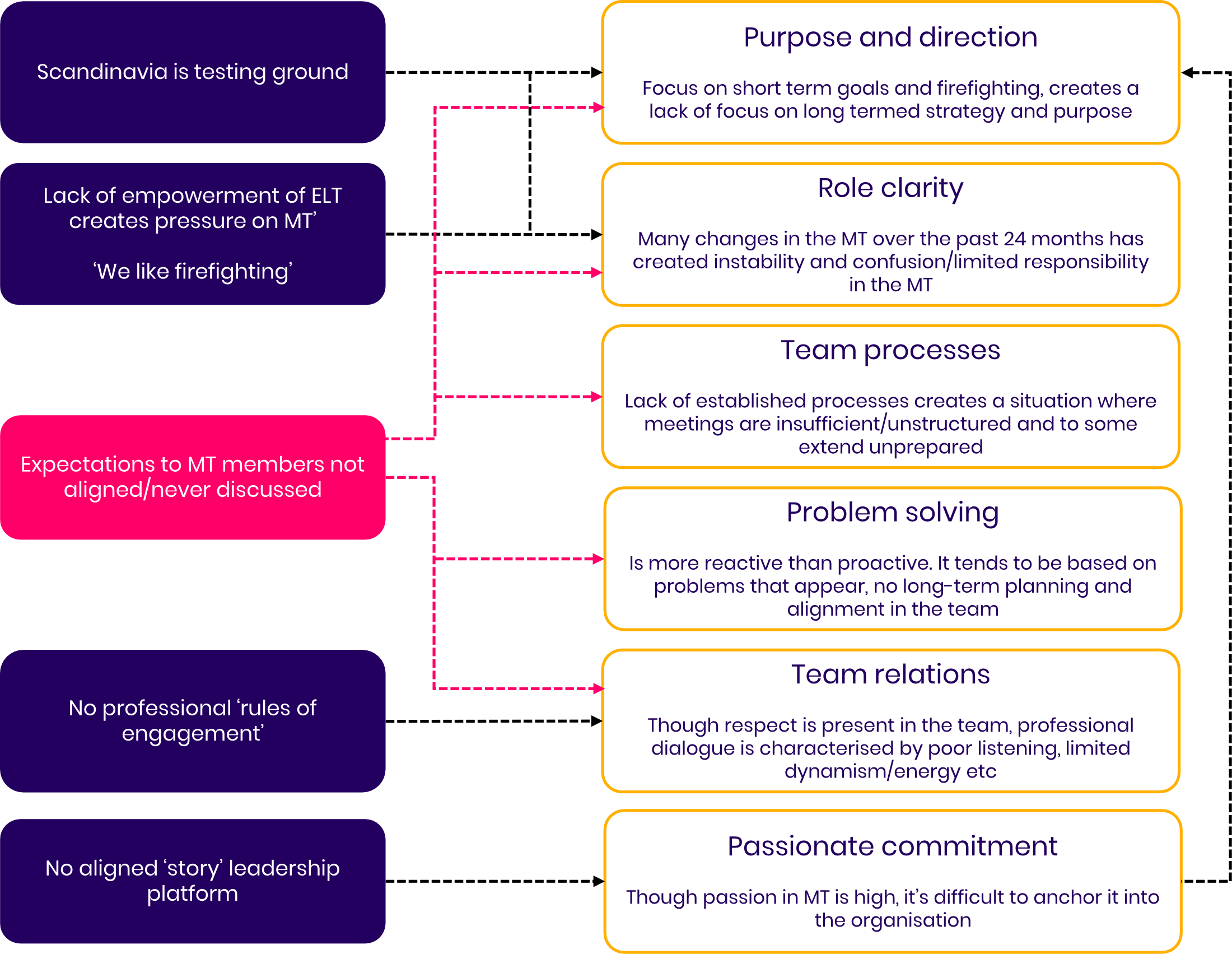
In a hybrid workshop series of four half-days, the top team members managed to be aligned on the following deliverables: (1) meeting infrastructure and heartbeat for the entire organisation, (2) agenda for each meeting, (3) governance & decision-making rules for each decision-making body, (4) team behaviour rules and (5) feedback rules including some practical exercises.
The actions were hands-on, and ownership was with the right people. It was not rocket science but the key to unlocking team performance.
With these practices in place, positive energy began to flow again. The team continued on its journey to recharge the other batteries.
Continuing with Strategy
The intention was not immediately to create an entirely new strategy but to restore and strengthen the foundation. The team had found that suffering from inadequate business planning had been the norm, along with daily “fire-fighting”. They were working mainly with an emphasis on financial targets without connecting the dots cross-functionally. Therefore, the MT intervened and spent time and effort to work together to create an annual plan that included all cross-functional perspectives.
Powerful management infrastructure
This annual plan was also the lever to recharge the Infrastructure battery. Whereas prioritisation had been difficult due to a lack of long-term objectives, the new program now allowed the most critical cross-functional projects to be defined. The financing for each of the initiatives was also set up. The CFO and his team translated the annual plan into a business dashboard so that the MT could work fact-based in their business meetings, with a solid Business Intelligence backbone to support it.
However, more was needed to get the battery fully charged. Critical capacity gaps must be addressed to build a future-proof organisation with more efficient operations and better safety performance. And that is what they set out to do. A capability matrix was drawn up, and key people were evaluated. Some critical capacities had to be hired externally, including four positions in operations, three in finance, two in commerce and one in HR. In addition, some people were promoted, and investments were made to optimise key business processes.
When you walk around, things feel different. If MT members have something to say, they say it directly to each other, and they are also able to receive more critical messages.
Healthy Culture
In recharging the Healthy Culture Battery, members of senior management are crucial as role models of the mentality and behaviour that the organisation wants to stand for. With this in mind, one of the senior top team members was let go to signal that their unprofessional behaviour did not fit in with the desired company culture. A serious decision, but with positive consequences! The general mistrust disappeared like snow in the sun. As one co-worker said: “It’s amazing how saying goodbye to such a person can release so much positive energy in the company as a whole”.
Connection with employees
As the annual plan was the enabler for focused business execution, the top team’s investment proved an excellent lever for recharging the connection with the employees. Earlier, we explained how a meeting infrastructure was set up, including the company’s town hall. These meetings provided a two-way dialogue and brought everyone together around one agenda. Ideas were generated to improve operations and cost performance. Employees felt more connected.
The outsource re-qualification project was not easy, but it is the first project in the company's history where we really spent time at the beginning to create the conditions for successful delivery, and the only one that was effectively delivered on time and in full.
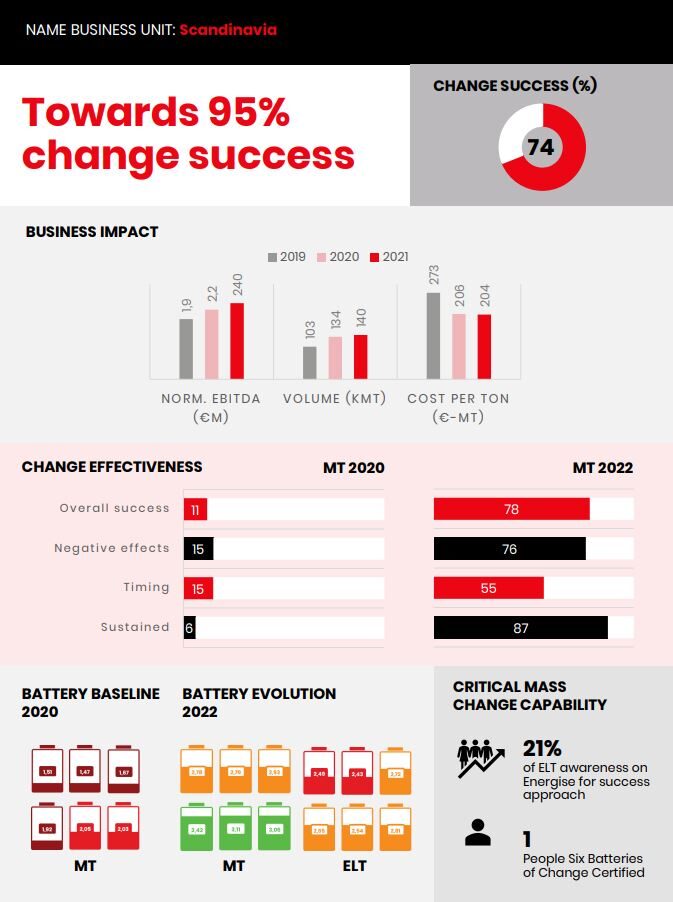
Business impact
This business case shows how the team managed to improve the health of their organisation while delivering business results. One year after the first Six Batteries Scan, this Business Unit has met its key business objectives as planned, even in a context of skyrocketing energy prices and severe COVID impact and demonstrated an EBITA improvement of nearly 10%.
Beyond that, their ability to perform while managing change has increased impressively, as evidenced by the jump in success criteria for change. We now see an organisation that is charged for success in most areas. However, the work is still ongoing.
Next steps
Recharging the various batteries is an ongoing process that requires constant effort. For this company, there is still much fundamental work in HR and Operations. The Top Team must define longer-term strategic planning and a compelling story for their three or 5-year business strategy. This planning and story should connect all employees at all levels. The new balance is solid but fragile because it is still predominantly pulled by the MT.
Therefore, it is all the more urgent to work with the Extended Leadership Team to further engage them as co-leaders in the journey to recharge the batteries that can pull the organisation forward to grow into a healthy, future-proof enterprise.
LQ team
The
experts of
this story
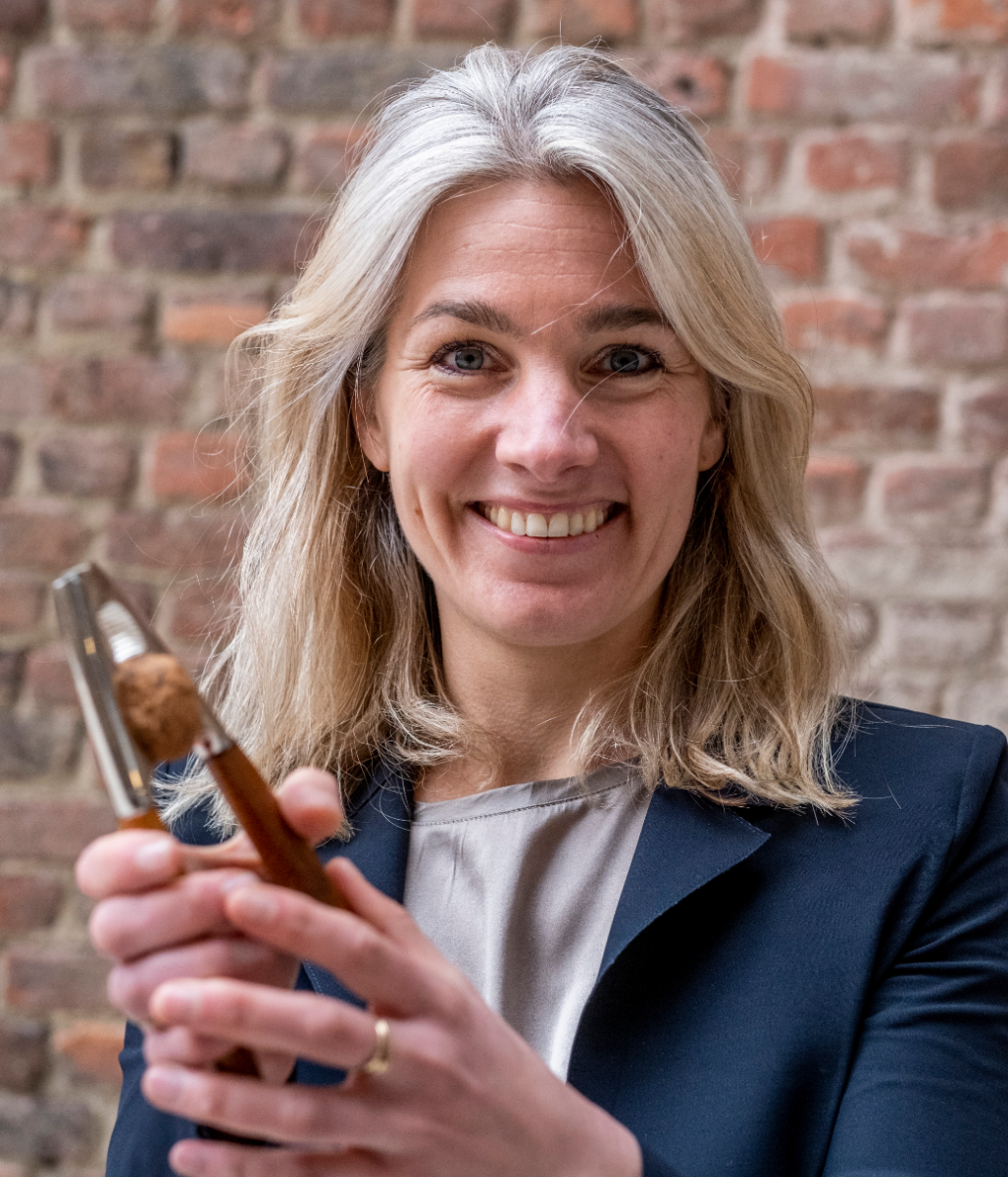
Anne Kloosterboer
co-CEO | Strategy, Clients & Partnerships

Geert Letens
Founding partner - Director Research & Thought Leadership
